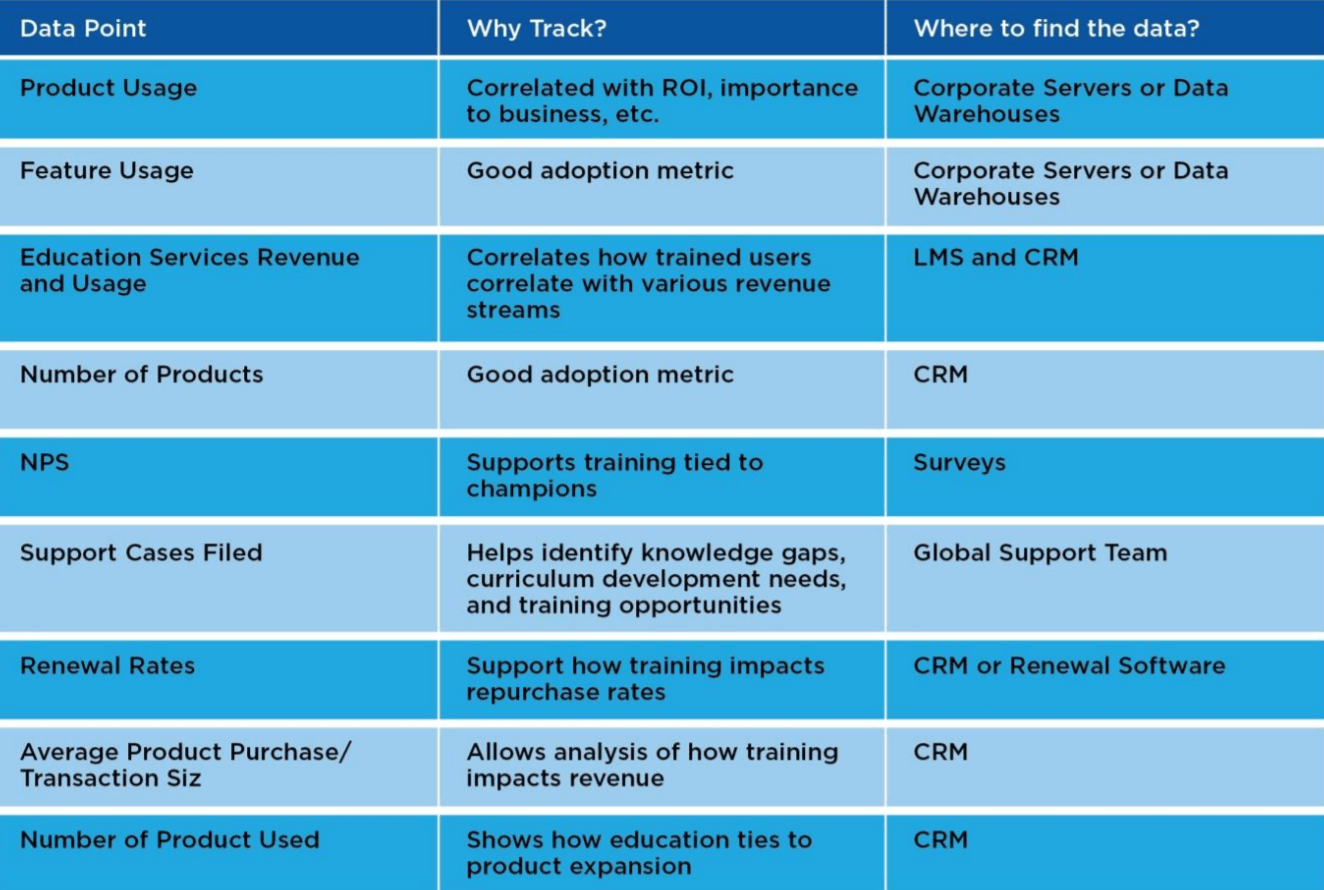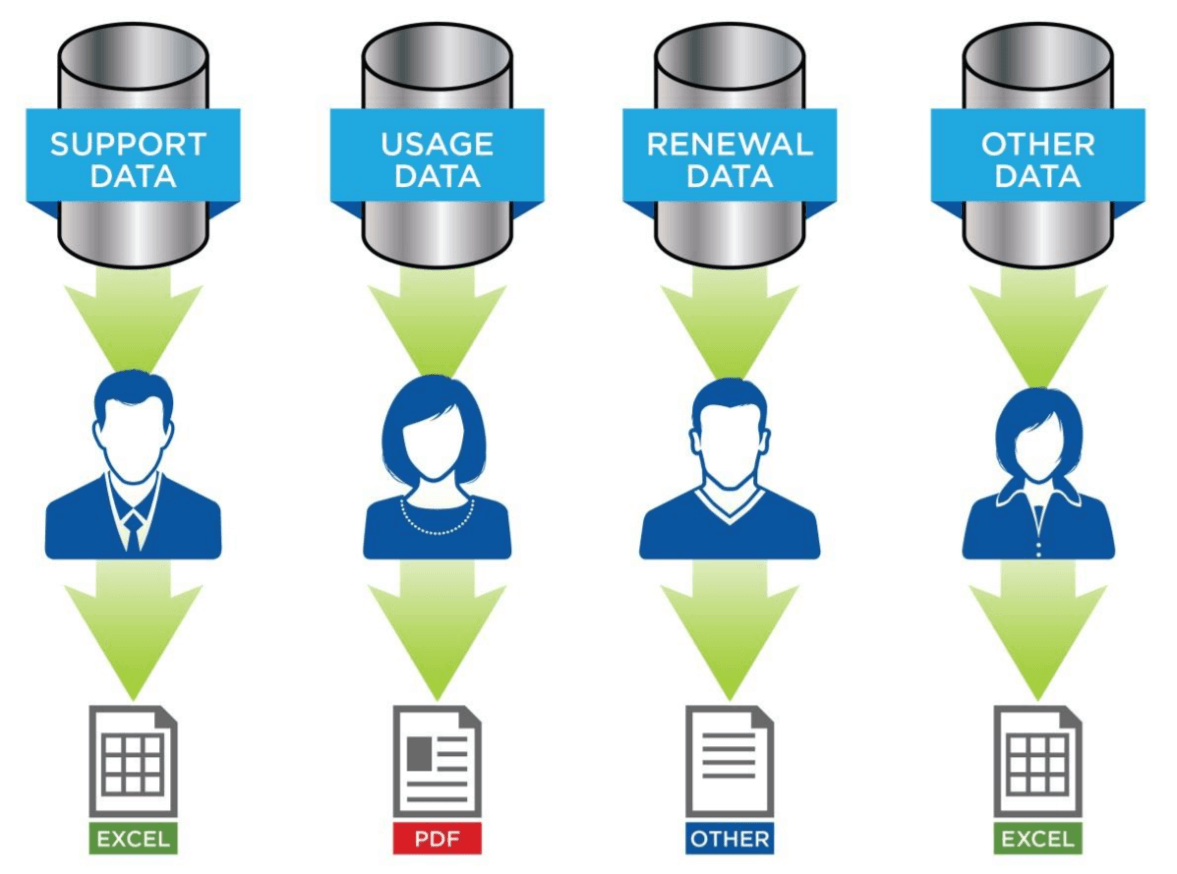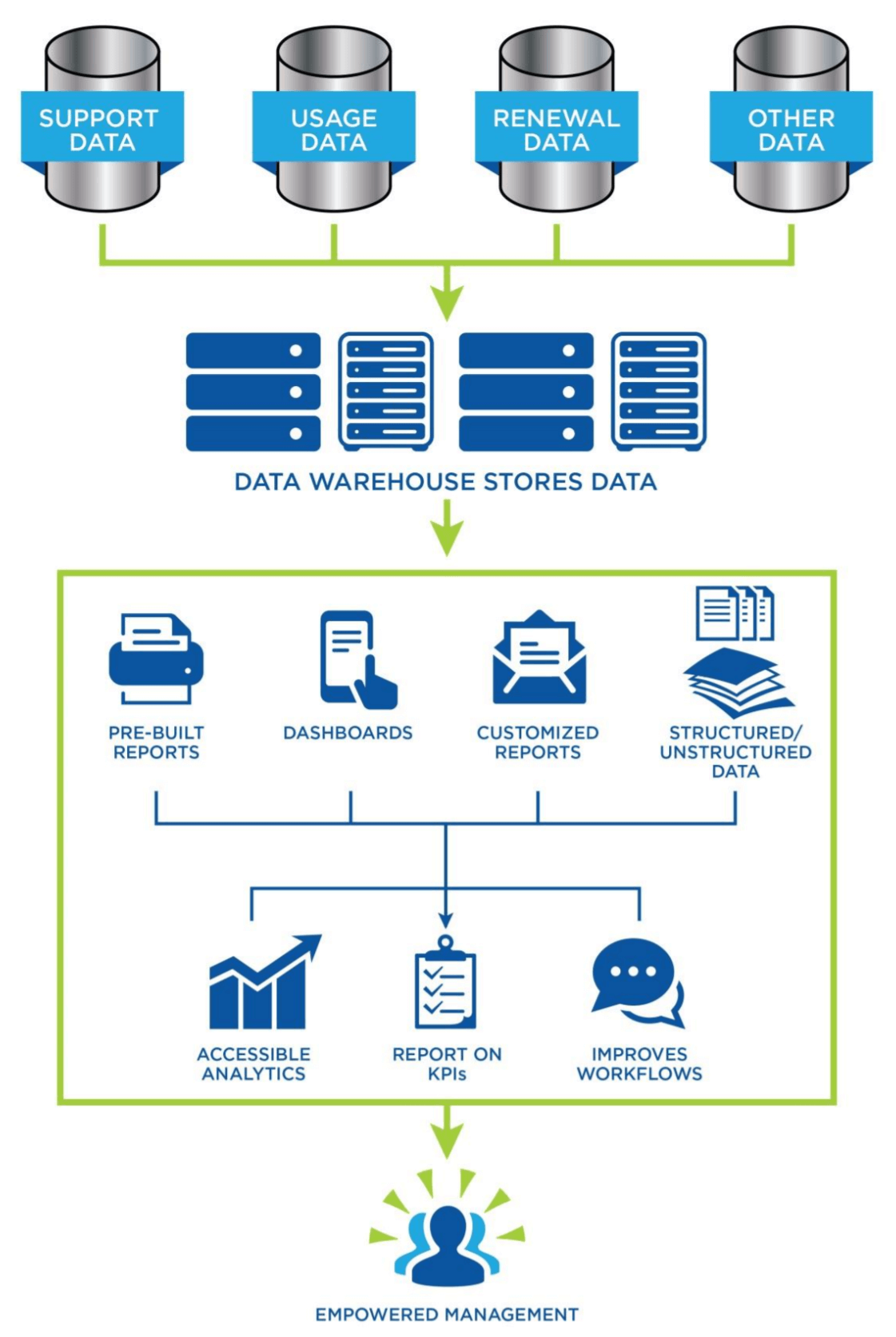Introduction
Business Intelligence is a popular buzzword these days. Chances are you have read some sort of article or blog post devoted to the concept of turning raw data into actionable insights, but the notion of Education Business Intelligence is likely less familiar. Education Business Intelligence (EBI) refers to having a set of technologies and processes that transform raw data into meaningful and useful information for business analysis around the education and enablement functions. The concept of EBI is nothing new. In fact, the thought of creating better insights and more actionable information around the importance of training and enablement is becoming more mainstream.
When executed properly, EBI can increase knowledge about how education assets are driving usage, product adoption, and improving business outcomes for customers. These insights provide improved discernment around where to invest in development and how to best allocate resources to achieve desired goals.
The current state of Education Business Intelligence
Today, many companies are analyzing education data in separate chambers. Marketing data, CRM data, LMS data, and usage data are all used to help understand your company’s education operations. Tracking all of these fields is important because it provides a broad picture of the state of your organization; even when analyzed separately, the data can still be helpful in making key business decisions and setting the course for your company’s future.
However, the down side of analyzing data separately is that it becomes more difficult and time consuming to draw correlations. When data from different departments within an organization is not examined collectively, a company misses opportunities to improve communication and productive working relationships between the various departments. The education business unit has a great opportunity to take the lead on analyzing training data along with usage data to significantly influence corporate insight on how well trained customers use products and derive benefits from their purchases. Long-term, this data will also be critical to structuring product and service pricing based on outcomes.
To better address the problem of learning how to leverage data across several departments and put it towards improvement in training, businesses should look to take advantage of EBI best practices so that they can succeed in their efforts to make training more valuable for their organization.
The link between Data Mining and Corporate Education
Data mining in a business context refers to the process of analyzing and examining a large amount of data for the benefit of your business. Today, there is a huge amount of data available for companies to consider, especially for corporations that operate on a large scale.
A strategy that includes EBI allows businesses to distill data that will help to connect education initiatives with other parts of the business. When you decide to incorporate EBI, you give your company the ability to access a huge amount of information that can help identify trends, such as:
- Impact Education/Training has on:
- Product usage
- Adoption rates
- Support interaction
- Business outcomes expected
- NPS/Customer Satisfaction
- Training demand
- Seasonal spikes on resources
This information is crucial to maximizing the internal and external ROI of your company’s education services.
In order to commit to a strategy that incorporates EBI, you’ll need a data mart to house all of the necessary information and a technology reporting tool to facilitate analysis. Keep in mind, the data alone doesn’t tell the story. It is important to have people that know and understand your business to act as a translator of the information. For example, for some software products, customers with the highest number of support calls are also the most knowledgeable on the product – their support calls could be sophisticated questions that even the support team needs to research! A holistic approach to EBI allows stakeholders to more easily identify and understand what is driving a customer from user to champion.
Another important tenet of EBI is providing stakeholders with the ability to “give and get” access to data anytime and across a greater number of formats. Having tools that are compatible and can be used with any device (tablet or smartphone, etc…) in an effective manner will allow busy managers and executives to be smart and mobile. This capability is important in today’s segmented world when team members are often working on the same projects but are not physically together.
How to build an EBI centric business – Step 1
The concept of single source reporting as a way to fuel better business decisions may sound great, but what does that mean to your current workflow and how do you build processes to work toward this ideal state? First step: identify the data points you should be tracking, where they live, and why they’re important. Comparing data between customers who have completed training and those who have not can glean valuable insights, but only if you know what to focus on. In addition to traditional Key Performance Indicators (KPIs) that are important to an Education Business Unit, such as:

Important data lives in a lot of different places. This can make the information difficult to obtain, especially if there is no one assigned to access or pull reporting from these systems. As a result, stakeholders are often left with a repository of unused data or more confusion than actionable insight. It may seem as though large organizations have the upper hand since so many boast sophisticated data warehouses (servers), but in reality, few have dedicated resources (or time) to extract, analyze, and translate any of the data.
In fact, the process of translating data into an actionable plan tends to look a lot like this…

Information is segmented and then manually combined in a way that isn’t easy to process or analyze. When data are disjointed and hard to access, it becomes next to impossible to formulate confident decisions that will positively impact your business. The concept of EBI takes reporting and analytics an extra step to simplify complex data and processes, offering a more manageable workflow with a more beneficial end result.
Unlike the current state depicted above, the education business intelligence model incorporates a process of automating some data transfers and having a tool that helps with reporting and analysis:

Why will education business shift from segmented data silos to single-source data reporting? Because the reporting needs for globalized software education companies is changing rapidly. Yes, metrics like fill rate, number of students, attach rates and instructor utilization will still be important. However, these data points don’t paint a full picture. Incorporating these with non-traditional metrics, like product usage and renewal rates, tell a deeper story that can help you make more informed decisions. In the future, training KPIs will be tied to product success that will be defined by product metrics such as usage, product adoption and business outcomes that tie to the original premise of the purchase.
Putting it all together
Understanding how to begin tracking and then analyzing all of this data can be a challenging task for any kind of business. There are numerous companies that can help you organize and track your data in one specific place so that you can begin the steps toward having good Education Business Intelligence. Companies focused on business intelligence like Qlik, Domo, Microstrategy, and many others each have their own specific approaches for improving your organization’s ability to receive and analyze data. Not only can these companies help you access data over all areas of your business, they also make it easier for you to view reports that substantially improve visibility into important trends and patterns.
Business Intelligence companies provide several different services that help organizations succeed in managing education intelligence, including:
- Tools to store and aggregate data sources from different places: This is important for those that have numerous sources of data and need to analyze them in one streamlined interface. For example, Domo allows users to pull data from spreadsheets, cloud-based applications, data warehouses, databases, and social media all at the same time, which helps give you a wider array of data to analyze.
- Reporting and dashboard features that are easy to build and customize: Dashboards are some of the most helpful business tools available, because they give you a single place to see a multitude of information that you need to learn about to help your business. Most dashboards are very intuitive, meaning they can be quickly picked up and understood by almost any kind of user, even if they do not have prior training. Dashboards can also be accessed from most common mobile devices, which means that companies have the ability to access the latest intelligence wherever they are.
- Improved speed and executive oversight: Companies that are very spread out and have team members working in various parts of the world may have difficulty quickly getting data to supervisors who need to use it to make important decisions. With business intelligence specialists, you can minimize this delay so that your company’s leadership has the information that it needs when they need it.
- Better understanding of company trends in education: Not only do these companies provide application support that helps with the actual process of collecting and viewing data, they can also assist with your efforts in setting up custom approaches that fit your company needs. These businesses specialize in knowing how to put data mining to good use. For example, MicroStrategy offers its own consulting services that can be used in tandem with their data services to help a company maximize the benefit that their clients receive from their data.
- A boost to the confidence of your business decisions: While instinct can sometimes play an important role in business, more valuable than instinct are hard data that back up decisions and action. Over time, data driven decision making will lead to confidence in the ability of your organization to make excellent business decisions based on better information.
- An enhanced ability to link the impact of training and education to important statistics like product consumption and renewal rates: You might feel like your education and training programs are successfully doing what they are supposed to do, but you should have the numbers to back it up. When you have easy access to business data, you can see with your own eyes how your training is impacting the success of your operation and where you need to make some improvements to help raise the level of positive impact.
- An improvement in the efficiency of your outcome-based pricing: Outcome-based pricing is becoming more common in the software and services arena. In this environment, it will be critical to have an in-depth understanding of both internal and external education related activities that impact the behavior required to achieve ultimate business goals.
Conclusion
Today is called “The Information Age” for good reason. Individuals and organizations have access to more data in more places than ever before. As a result, success in the current world of business is now based on having efficient access to the right information, and being able to act on that information in a manner that brings about the maximum return on investment. If you are not already working on an EBI strategy, start to scope out a path to incorporating this notion into your planning process. Be sure to check in with other leadership counterparts who might have already worked through a similar challenge.
Education Business Intelligence will improve your ability to lead your organization’s Education Services vision and provide insights around management and execution. It creates improved data for business decisions, better alignment with other divisions of the company, and will position Education as a core contributor to customer success. Regardless of where you are now, bear in mind the commitment to improved EBI is an evolving journey. Start with some manageable (and affordable) steps and learn how to integrate new information into the overall success of your customers and company.

